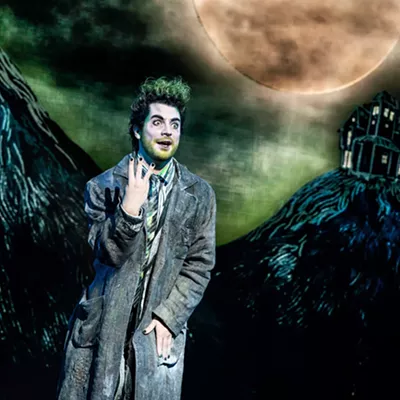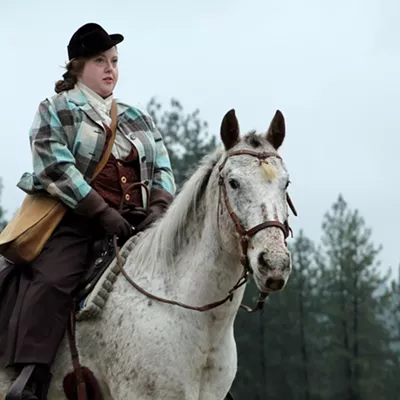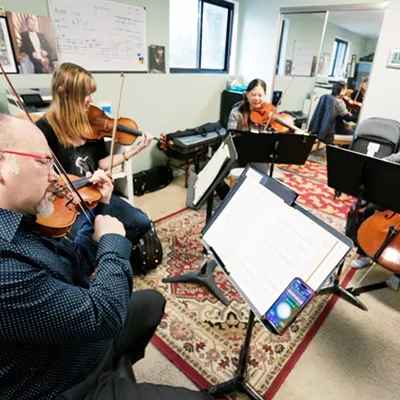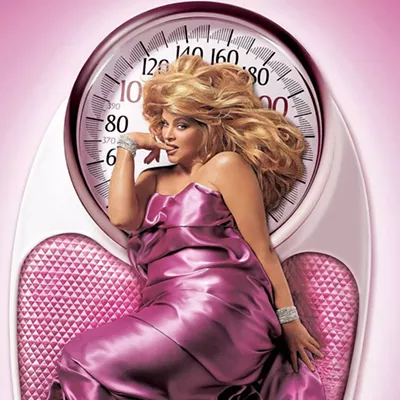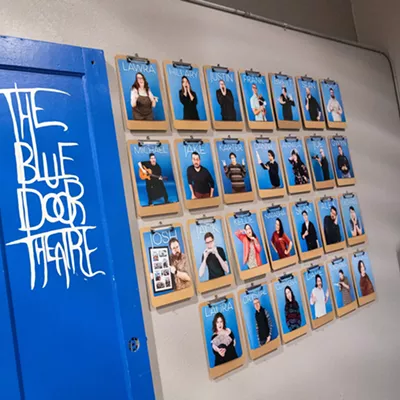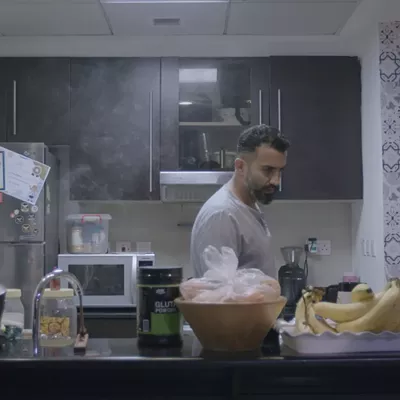When he co-directed The Rocky Horror Show at Stage Left Theater last fall, Troy Nickerson opted for a back-to-basics approach. He scaled down the set pieces, dialed back the gimmicks, and shifted the focus to the story and its characters.
The run sold out before it even opened.
He's approaching Sweeney Todd: The Demon Barber of Fleet Street in a similar way. When the show opens at Stage Left on Friday, it won't feature the famous — or rather, infamous — chute that sends Todd's corpses to Mrs. Lovett's popular pie bakery below. Stage blood will be shockingly absent. And, as in Rocky Horror, more responsibility will fall on the tiny ensemble to help drive the narrative and create the atmosphere.
"Everything that happens, happens directly in front of the audience. I only have so many people, so in the one song, when Sweeney slices their throats, my guys just kind of rotate through the chair and become different people. In some cases, I actually put them back into the small ensemble and they start singing," Nickerson says.
"That sounds like it's going to be kind of stupid," he laughs, "but, surprisingly, it works."
More than just an attempt to recreate the success of Rocky Horror, the switch to a more stylized feel comes down to the physical constraints of the performance space. Here, conventional wings and backstage areas are practically nonexistent. There's no pit for live musicians. All that limits the usual methods for achieving scale and spectacle.
"It's Stage Left, so it comes with its challenges in how it's being presented," he says. "But that's actually turned out to be the most rewarding part of it for me. How am I going to do this? What do we need to do to make this work?"
With the creative resourcefulness of his cast and crew, Nickerson has been able to come up with answers to those questions. Jeremy Whittington's set will feature some unique paintwork, for instance, and lighting will play a more active role.
What's proved more challenging is Stephen Sondheim's music for Sweeney Todd, which is known for testing the mettle of even first-class performers. None other than Josh Groban was tapped for the title role in the show's current Broadway revival.
"I knew this music was hard, but it is really difficult," Nickerson says. "There are parts where the rhythms can be tricky. So I give [the cast] movement that matches. If it's something like a patter lyric that's going against the music, like in 'God, That's Good!' at the start of the second act, my choreography goes with the rhythm of what they're saying."
Of the roughly 70 actors who auditioned for this production, Nickerson was able to choose the singers who he felt had the necessary skill as well as the endurance for it. The show is almost entirely sung-through and therefore "pretty much an operetta."
Erik Contzius, who ended up being cast as the homicidally vengeful barber, brought an atypical background that may have helped him get to grips with Sondheim's demands for the baritone role.
"My training is as a clergyman, not as an actor. I'm trained as a Jewish cantor," he says.
A cantor typically leads the congregation in prayer or ritual along with the rabbi or, in some Judaic sects, is one and the same. For Contzius, his liturgical experience dovetailed with his love of opera and musical theater, and he began pursuing more stage and film projects after stepping away from the pulpit in 2013. It ultimately led to a gig — playing a cantor, what else — in the 2021 feature-length Barry Levinson film The Survivor.
Given his druthers, Contzius prefers "goofy, fun, animated roles" over simply reprising his former profession. He's a self-proclaimed "Gilbert and Sullivan guy" and names Aldolpho in The Drowsy Chaperone or El Gallo in The Fantasticks as "dream parts." Which, he admits, makes Sweeney Todd an odd choice for him.
"This is against type for me. But I like to stretch and do dramatic things. And you can't beat Sweeney Todd for its drama and its gravity. It's a revenge story at its heart, but it's also a love story," he says.
"Actually, it relates back to the story of the Bible of the Hittites, where King David wants to marry Uriah's wife, so he has the whole army pull back and Uriah's left out there and gets killed. That's more or less what happens to Sweeney Todd with Judge Turpin."
Contzius points out another religious link lurking in Sondheim's music: the Dies irae, a medieval Latin poem that later became a Gregorian chant. The melody has been used by the likes of Brahms, Haydn, Liszt, Berlioz and even Danny Elfman, but it carries added significance in Sweeney Todd. Dies irae means 'day of wrath.'
"From the very beginning, you know it's not going to have a happy ending," he says. "But there's a lot of humor in this show too. It's not just this whole downer and killfest. It's got this levity. And the point of the show is not the killing. It's about obsession." ♦
Sweeney Todd • Feb. 3-26; Thu-Sat at 7 pm; Sun at 2 pm • $30 • Stage Left Theater • 108 W. Third Ave. • stagelefttheater.org






